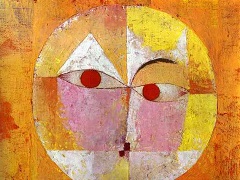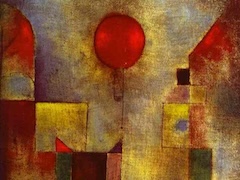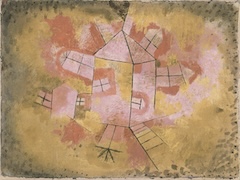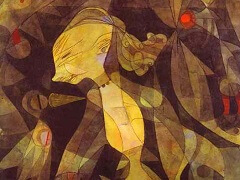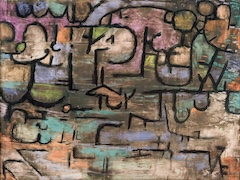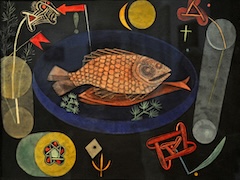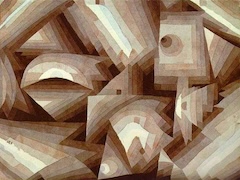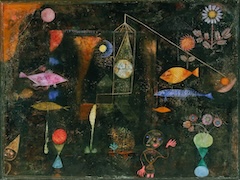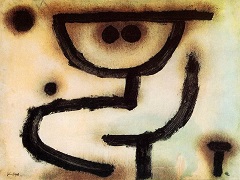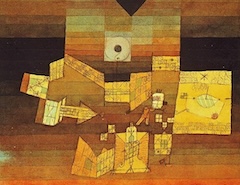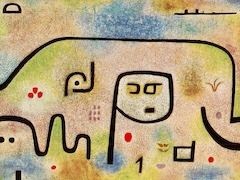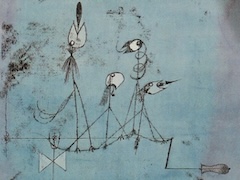Highway and Byways, 1929 by Paul Klee
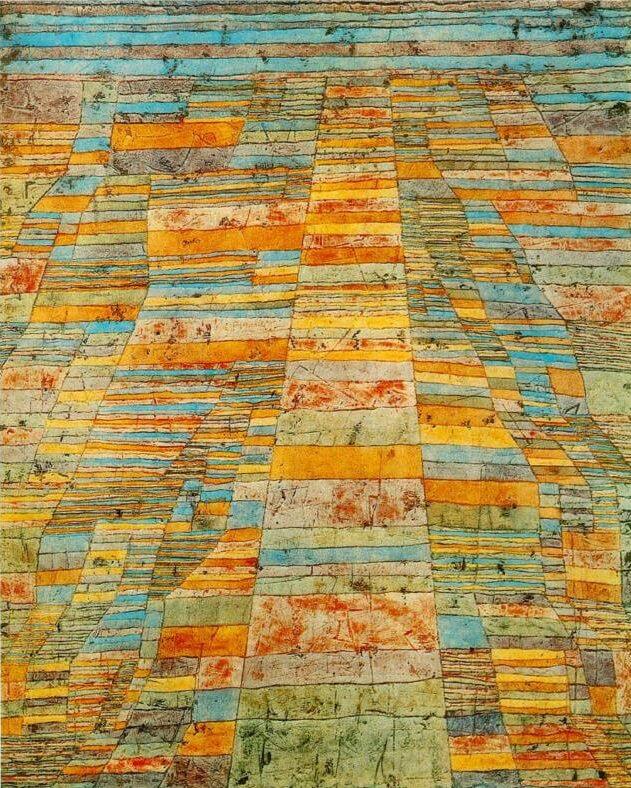
This is the most important painting to come out of Paul Klee's trip to Egypt, from mid-December, 1929, to early January, 1930. He visited Luxor, Karnak, Thebes, Aswan, and Cairo. The journey was nearly as great an experience as the earlier one to Tunisia. He must surely have had a fairly clear idea of what he was looking for. It is noteworthy that certain works done long before the journey exhibit similarities to the works inspired by Egypt.
Presumably Klee had made a study of Egypt and its millennial culture. On the way there, stopping in Syracuse, he felt that "historical sensibility in conjunction with nature is the right thing." Such a simultaneous view of time and space is crucial in the Egyptian pictures.
How he arrived at the strip pattern would require detailed studies, but it is somewhat easier to grasp is one is familiar with the pattern of Egyptian grain fields on either side of the Nile, pyramidal forms, and especially the swirling verticals made by rapids in a river. The fields lead to the Nile, stretching horizontally across the picture surface in varying widths, cut by verticals and diagonals. As in the case of the parallel figurations, this result in a richer pattern which, combined with bright, luminous colors, evoke a landscape. The title, Highway and Byways, would seem to refer to paths leading from fields to the Nile, which is represented by the blue band at the top.
The work was painted about six months after his journey. The pictorial ideas were left to mature until the meaning of the incomparable land could be communicated in a way hitherto unknown, until Ka, the land's very source and substance, had entered into the picture. In this pattern of fields all is order, timeless structure, with a poetic element added - for what could be more poetic than an Egypt born again out of invented means, in twentieth-century creative language?

